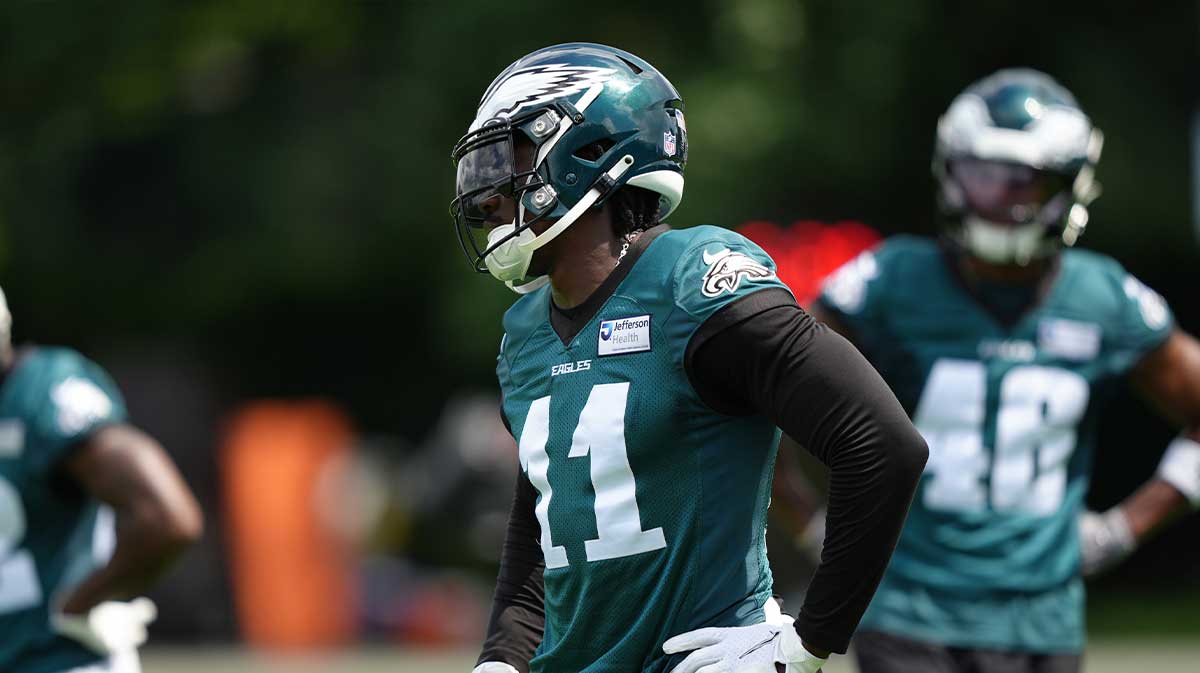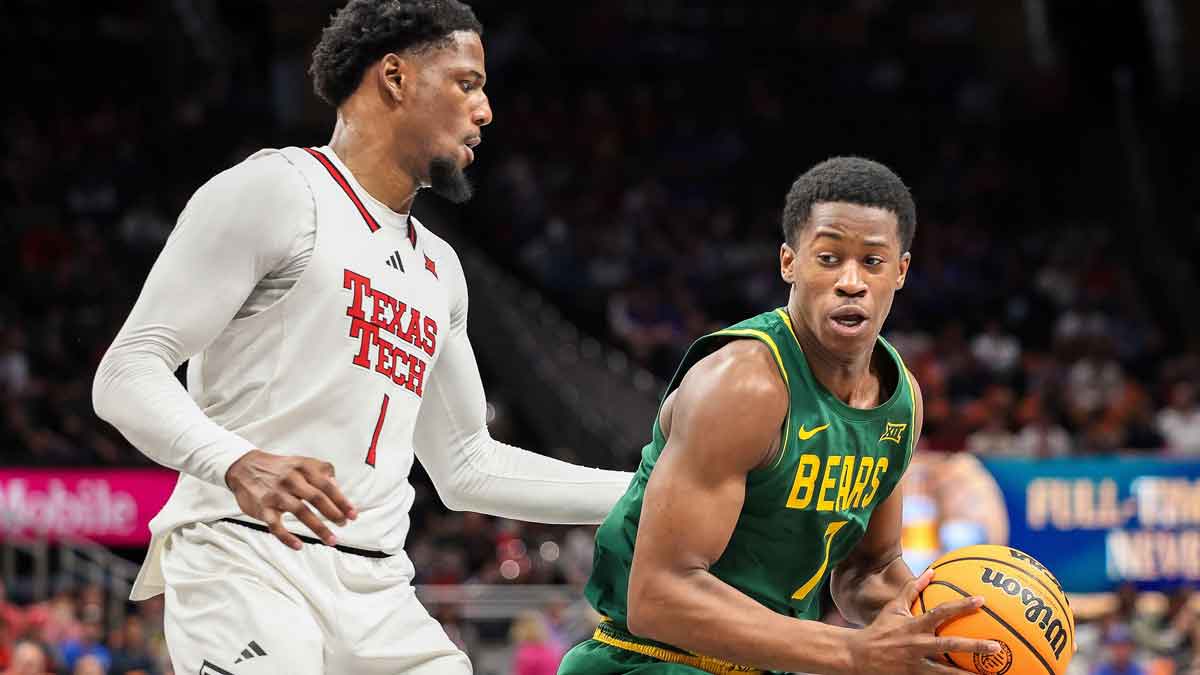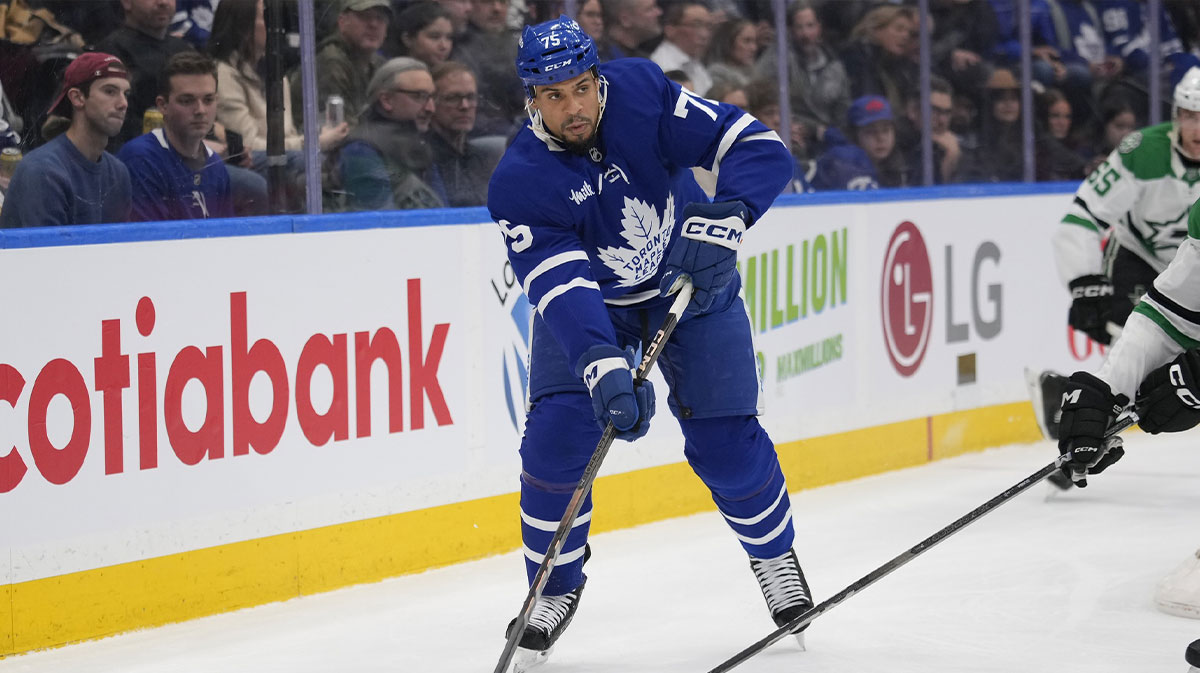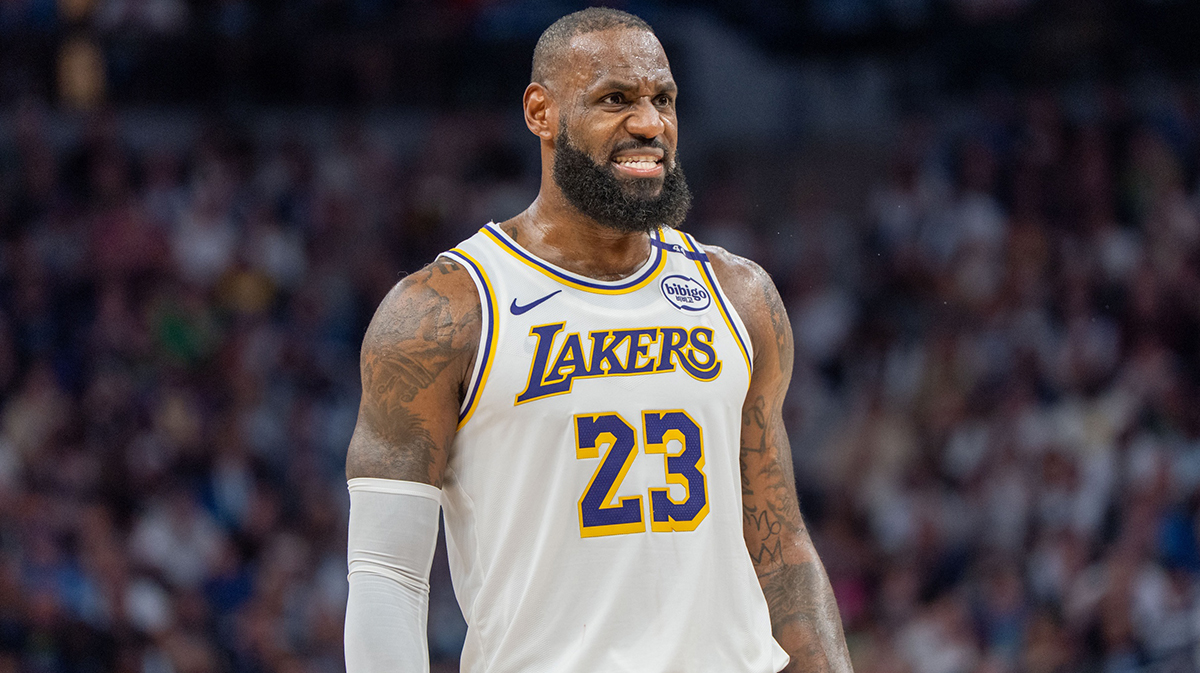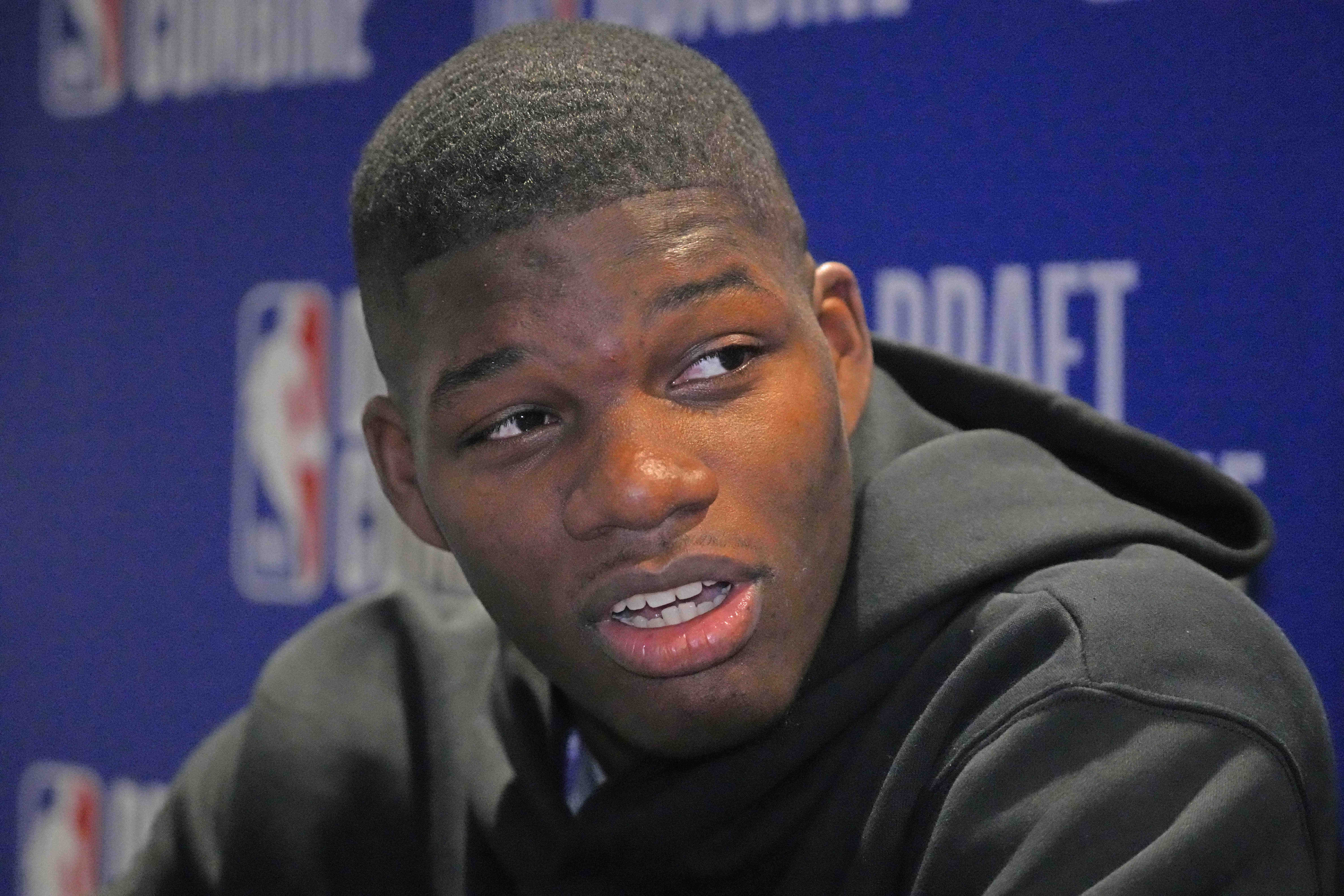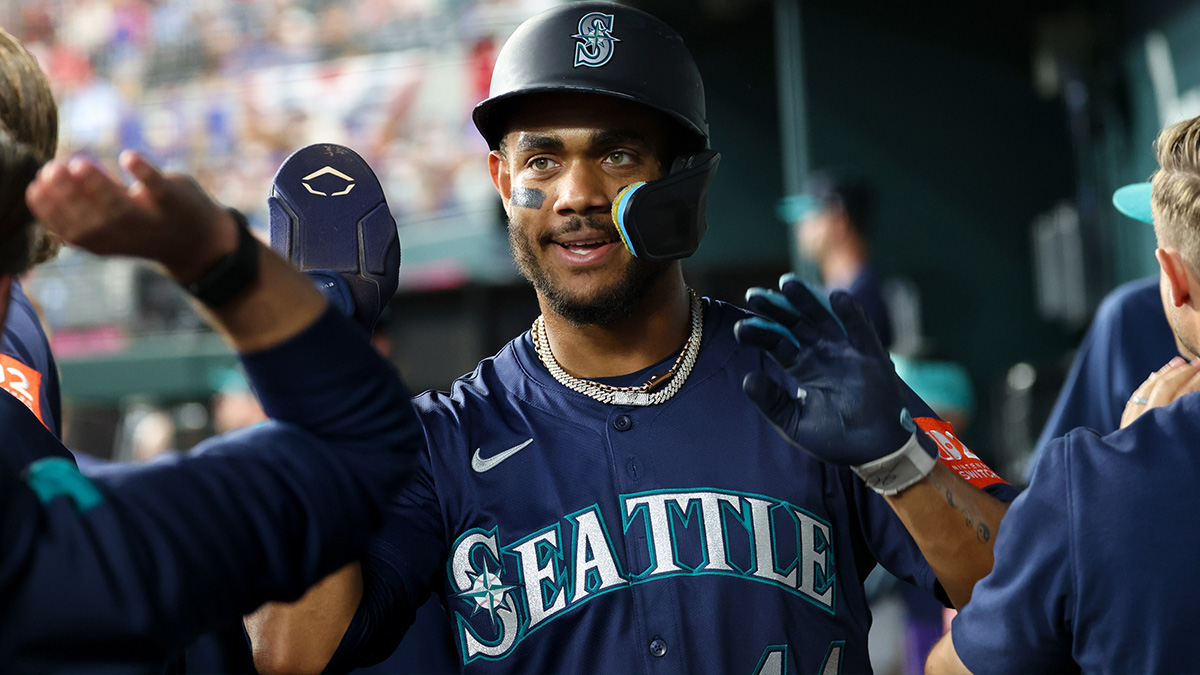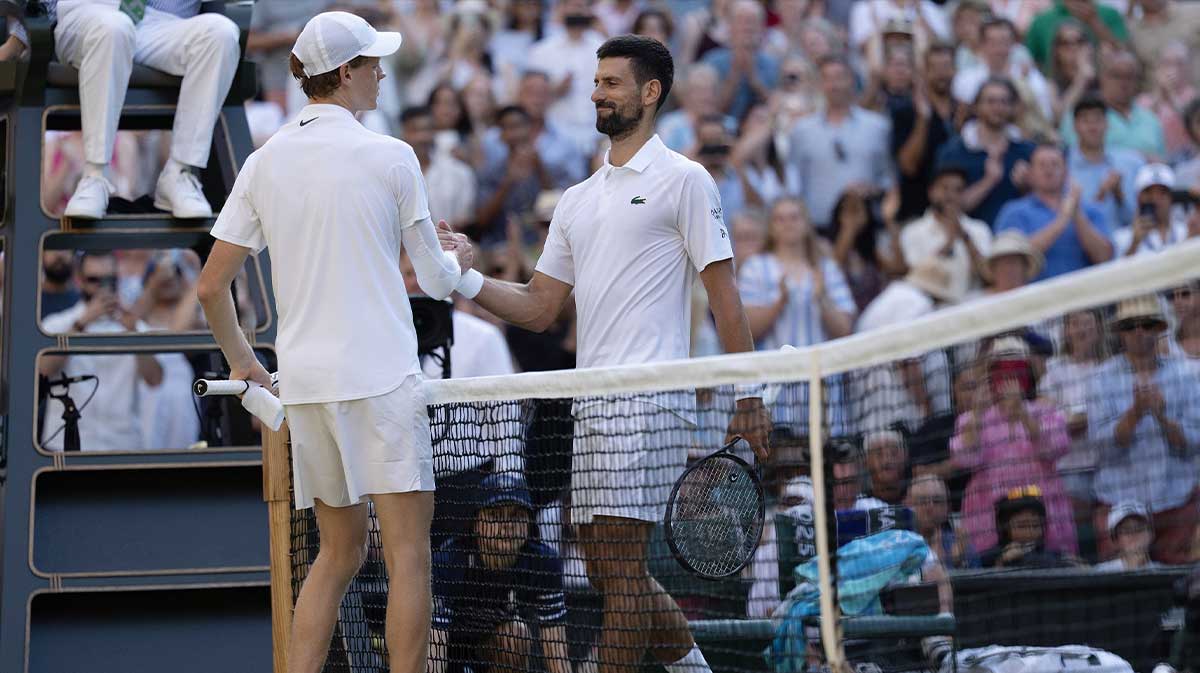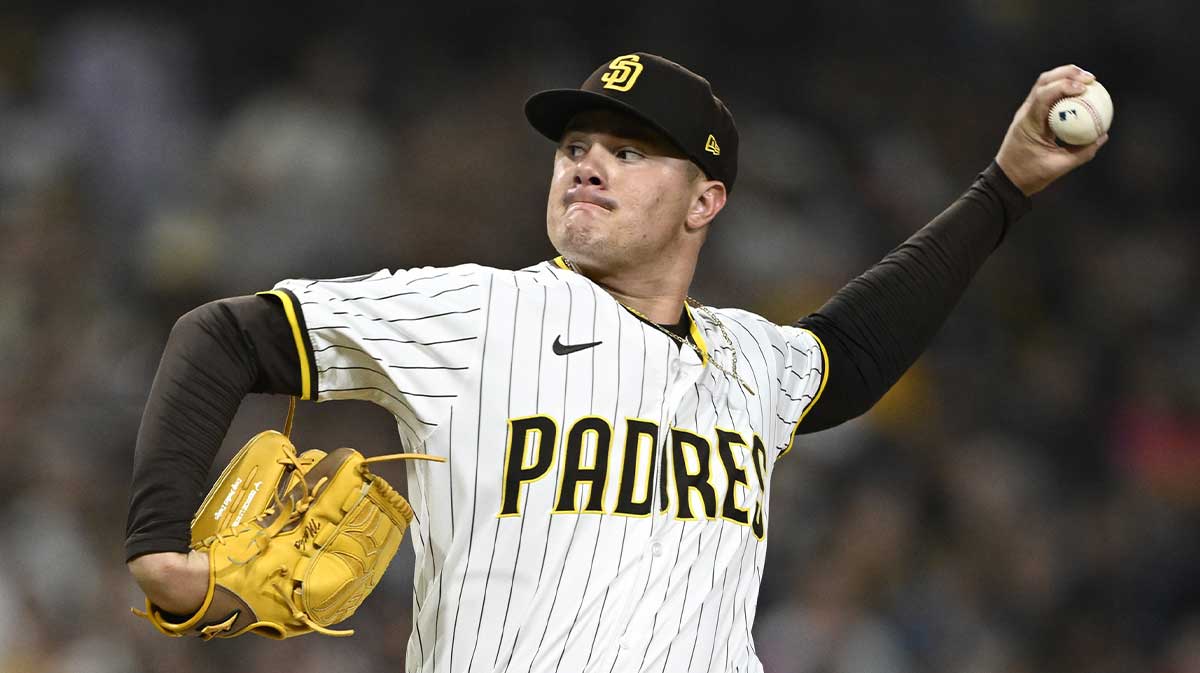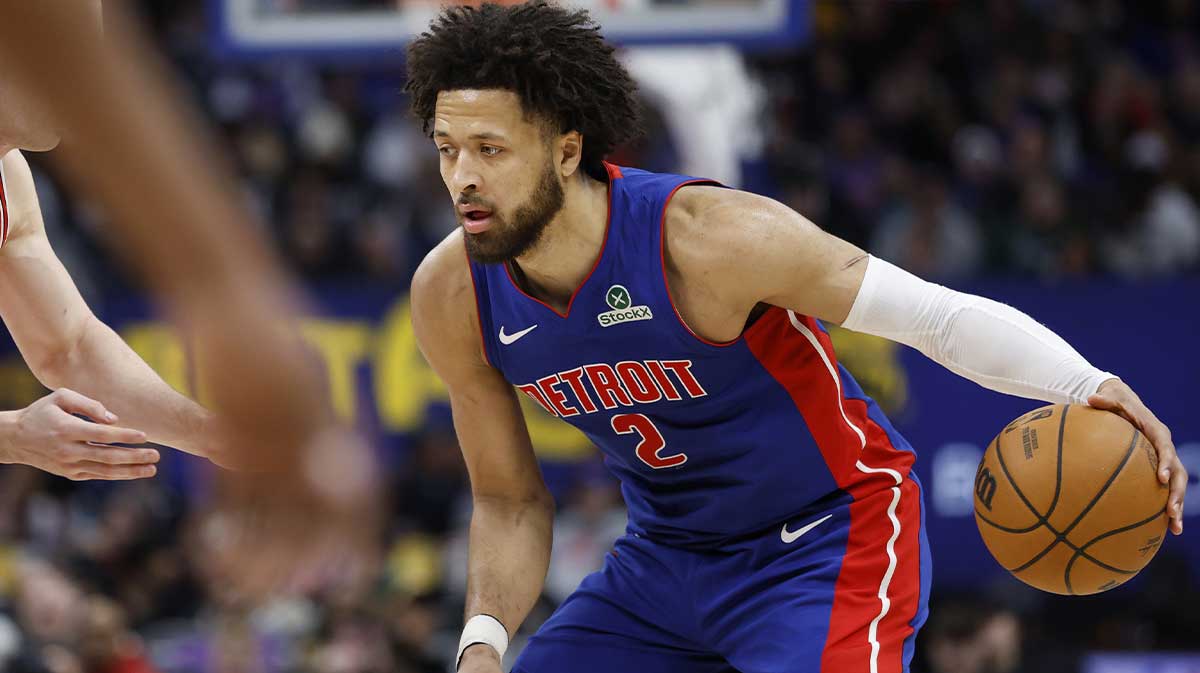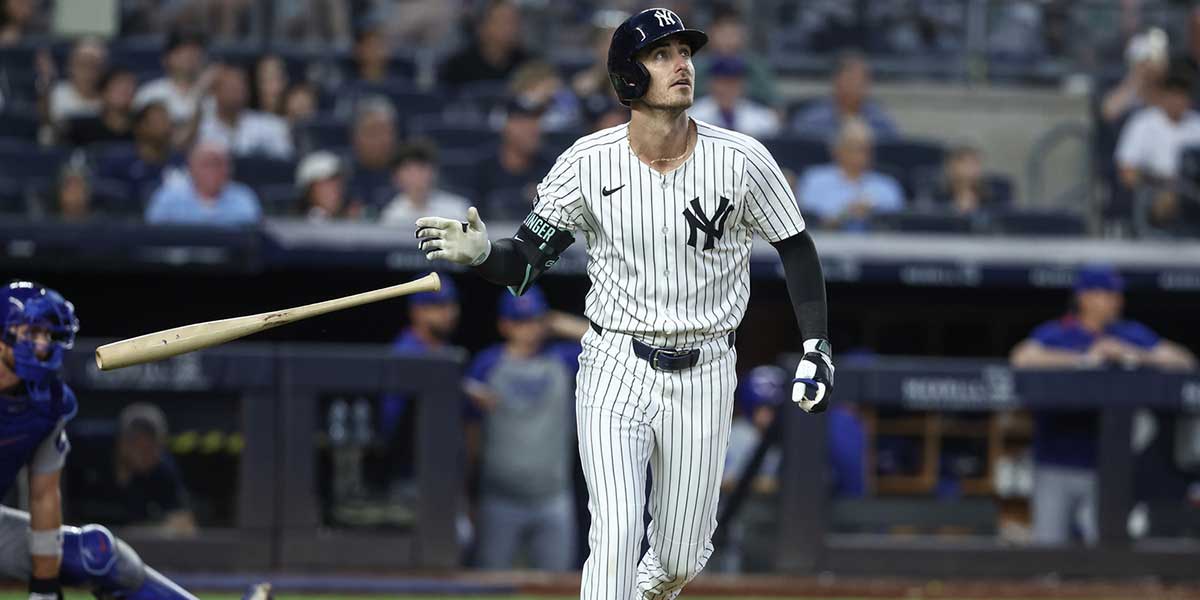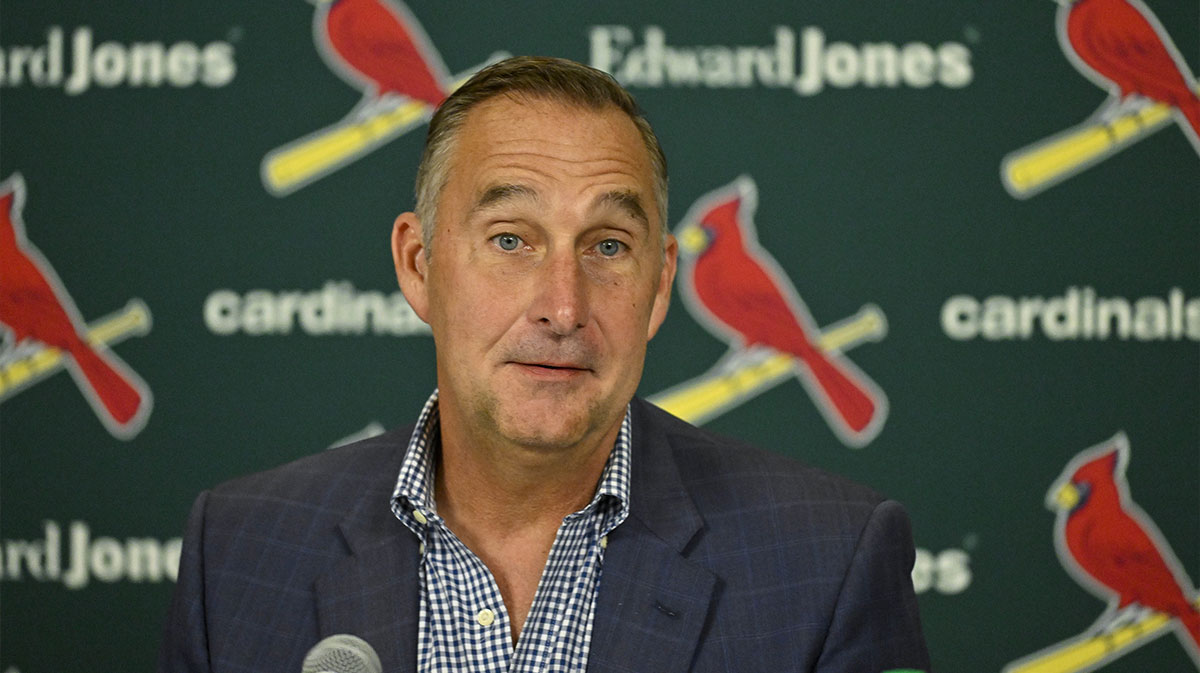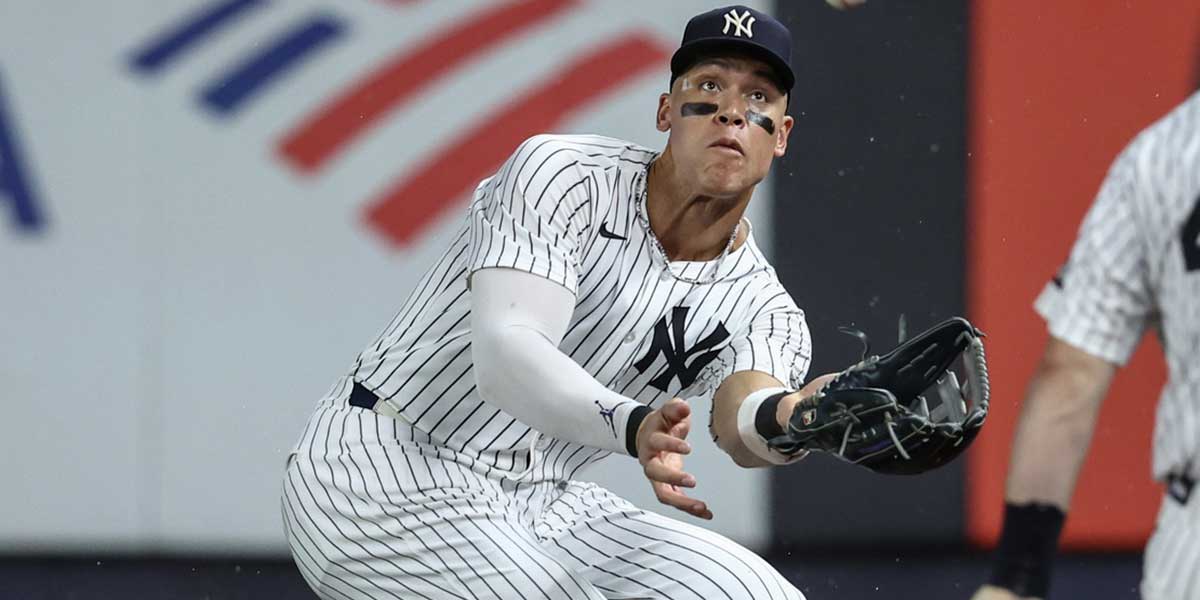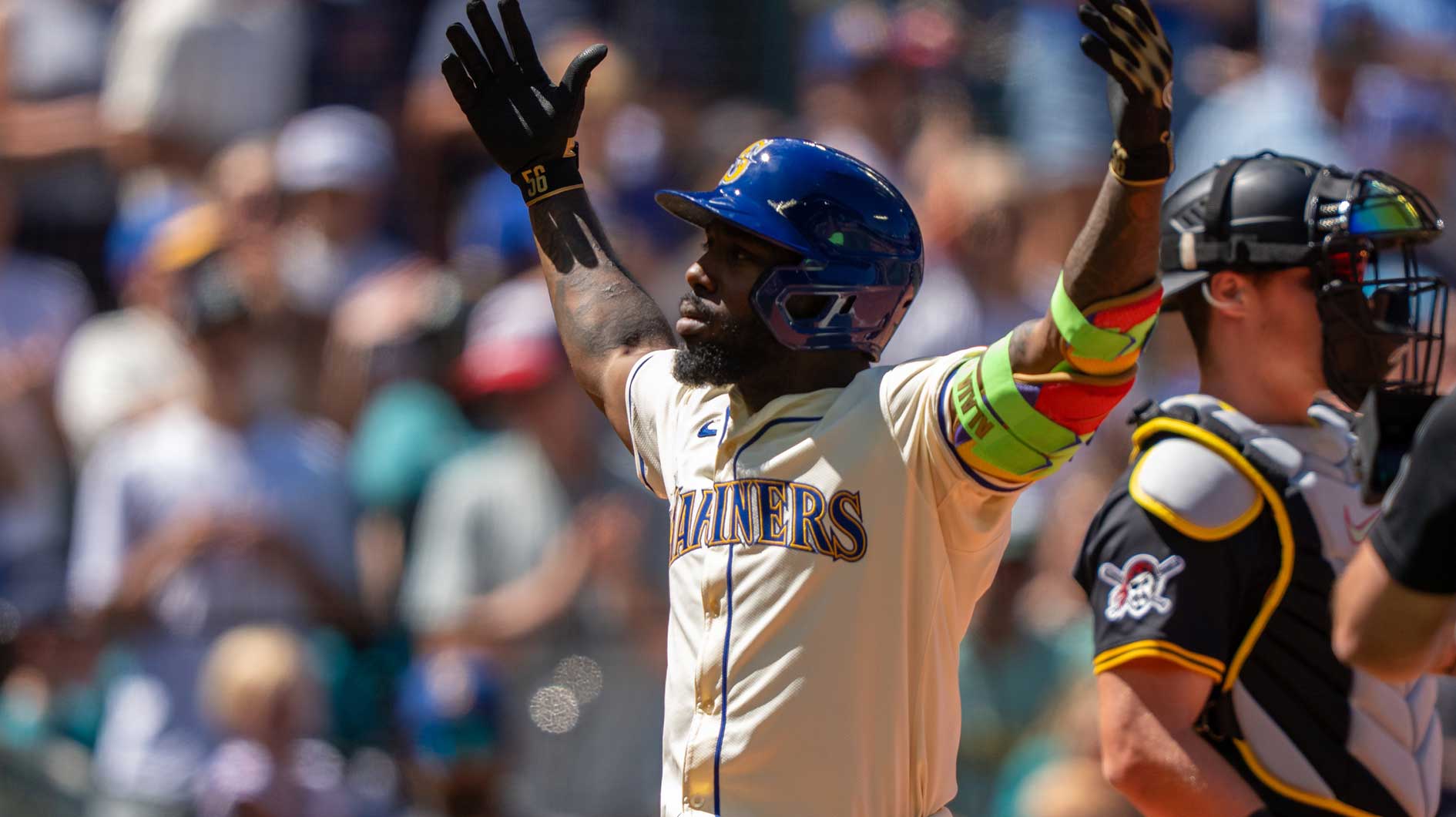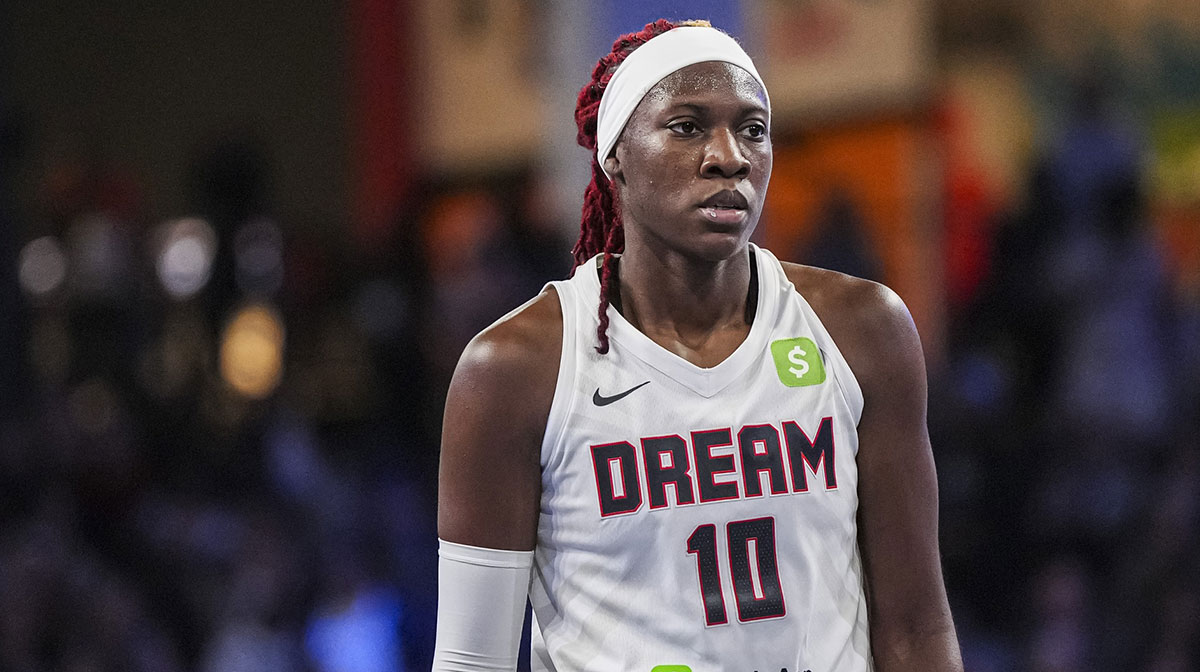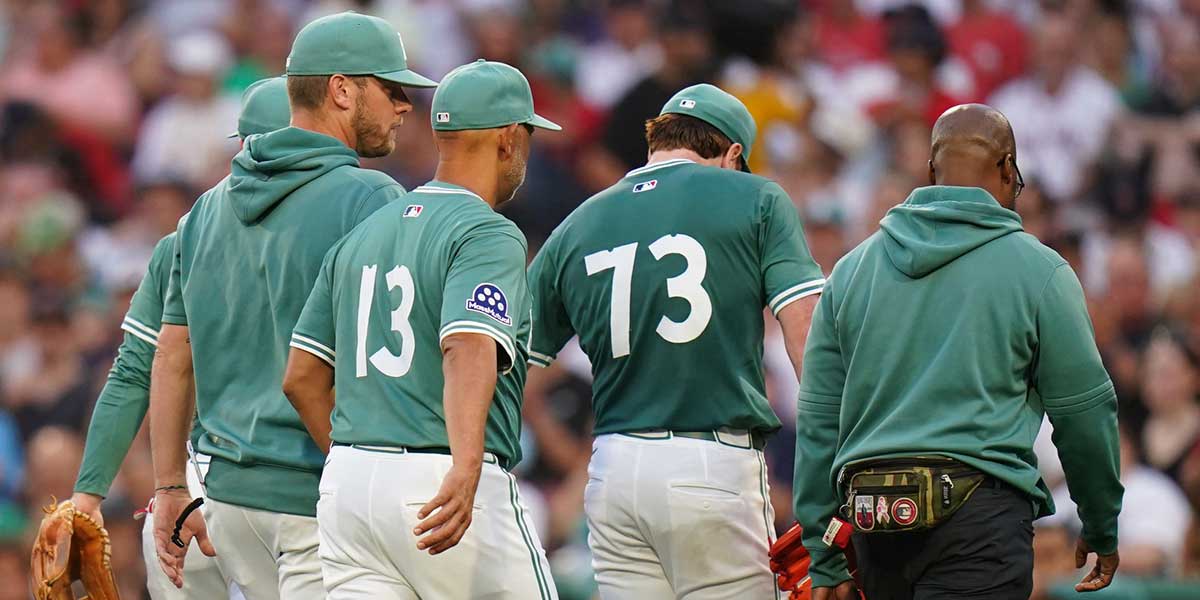Carried solely by adrenaline after 42 minutes of packing an entire team and city on his shoulders, he jogged to the scorer's table and leaped to the top.
There, staring at thousands of fans as they scream in jubilation, he lets them know why it was never time to panic.
“You know me!”
Expressing the same thing to his teammates in the celebratory huddle, he makes it clear why nobody should be surprised.
You know LeBron James.
We all know LeBron James.

After 15 years, we've become numb to everything he contributes. Everything he's capable of. Every moment that feels too big. Every burden that feels too heavy to carry, when he's the only one producing. Every situation that feels too unpropitious for him to survive.
More importantly, we're numb to LeBron's acuity and physical invincibility to deliver under those circumstances.
In back-to-back possessions to close Game 5 on Wednesday, LeBron James reminded exactly how much he means to a franchise.
Isolated on an island with Victor Oladipo, a younger and faster jet engine with a 40-foot runway, James knew he had to give Oladipo space to prevent a full blow-by. Indiana's superstar still got an ideal look, crossing over James and gaining enough separation for a layup attempt. What followed, however, was just another one of the King's traits every fan has grown used to.
Goaltending or not (a call that close is awfully difficult to judge in real time, with the naked eye) James recovered to erase Oladipo's finger roll off the glass. It hit the backboard first, but wasn't called. Officials do not have the ability to review a potential goaltend unless it was called on the floor.

Since there was no call, they couldn't reexamine it during the timeout. If Oladipo had been just half a step quicker, the Pacers would've led by two, with four seconds left on the road.
Then, it happened. On the final play, in a sideline out-of-bounds scenario, LeBron James put everyone in Quicken Loans Arena through nostalgia.
Cleveland set up in HORNS, with James and Korver on the elbows. As soon as Jeff Green was given the ball to inbound, Korver turned to set a cross-screen on James' defender, Thaddeus Young. With only three seconds left, that was all it required to get Young a step behind the play.
James caught it comfortably, took two dribbles to his sweet spot (drifting left on the perimeter), and let it fly.
Nine years ago, a similar shot saved them against the Orlando Magic. In the same spot.
https://twitter.com/World_Wide_Wob/status/989324740828581888
In 2009, his buzzer-beater drew the Cavs even with Orlando 1-1, though they would ultimately lose the series in six games. Wednesday's game-winner lifted Cleveland above Indiana 3-2, with the Cavs nearly blowing a double-digit lead.
The parallels between 2009 and 2018 don't stop there, either.
In the series with Orlando, James was a one-man army. He averaged 38.5 points, 8.3 rebounds, and 8.0 assists per game, while playing over 40 minutes in all six. In this duel with the Pacers, he's supplying the Cavs with 34.8 points, 11.4 rebounds, and 8.0 assists per game. That's his production similarities at age 24 versus 33, which doesn't seem realistic for any human body.
The biggest — and scariest — difference?
His was up against Orlando in the Eastern Conference Finals, deep into the postseason, eventually falling to the East champs.
Now … this is in the first round.
It's in the 4-5 matchup. The Pacers are a quality and cohesive team but they are what they are: a 48-win squad with a ceiling of the second round.

Historically, LeBron-led units do not struggle this much with teams that fit Indiana's profile. Since he's returned to Northeast Ohio, the Cavaliers have only lost five combined games in the Eastern Conference Playoffs: two versus Chicago in 2015, two versus Toronto in 2016, and one to Boston in 2017. If the Pacers take Game 6 on Friday, James and company will have already suffered three. In the first round.
James finds himself as the only productive member left of the 2003 draft class. Dwyane Wade finished the season in a bench role, telling reporters it’s “Miami or nothing” in regards to playing next year. Carmelo Anthony is showing he’s no longer a top 100 player, eating the Thunder’s salary cap and being virtually unplayable down the stretch of games. Chris Bosh was forced to hang it up after experiencing blood clot issues. David West is contributing strongly for the Warriors’ bench, playing spot minutes and chasing titles.
Even Nick Collison, Luke Ridnour, Boris Diaw, and Kirk Hinrich — all role players — are purely spectating at this point.
What was known to be one of the greatest draft classes in history is down to one active star. It happens to be the one showing zero signs of offensive decline and monumental ascension in basketball IQ and decision-making.

For James to be the only one still capable of leading a team to a championship is one thing. For him to still be the best player on Earth? That’s unspeakable.
More than anything, this 15th season was strictly a reminder that, “I’m still here, and I’m trying to surpass every statistical feat Jordan earned,” from LeBron. Individually, he had his best offensive season since returning to Cleveland.
Team-wise, though, this first round series is showing us exactly why James’s efforts are bittersweet. As rewarding as it may be for James to prove he's inching closer to the greatest in history, he knows something in the back of his mind.
This is the earliest in the playoffs he's had to work this extensively since, really, his young 20s. It doesn't bode well moving forward considering the Cavaliers (likely) have a second round rematch with the 59-win Toronto Raptors. If they scraped by Toronto, they could see the hungry and far deeper Philadelphia 76ers in the East Finals.
Both of those series would come without homecourt advantage. They have barely held off the Pacers with homecourt.
The sheer reliance on James in this series isn't healthy. Just realizing the gap in every statistical area for the Cavaliers has to be frightening to him, but also head coach Tyronn Lue and the organization:

If a 36-year-old Kyle Korver is second on your team in PER and it's only at a league-average bar … you probably should be swept in the first round.
Luckily, Cleveland has someone that could be confused for a robot. James has played 213 of the possible 240 minutes in this series, or 88.8 percent of the time. In those minutes with LeBron on the court, Cleveland has defended at a much superior level to their regular season woes. They have held Indiana to 99.9 points per 100 possessions when James plays. When he sits (only a sample size of 27 minutes), that swells to 119.6. Even in a season where his defensive effort and awareness have slipped, the Cavs still rely on him to be an extension of the coach on that end.
In this series, James is 53-of-84 (63.1 percent) from two-point range, a higher mark than his already-ridiculous regular season efficiency. Out of those 84 shots, 48 have come at the rim. He's attacking with force, even with the Pacers loading up on him with Thaddeus Young, Bojan Bogdanovic, Domantas Sabonis, and Lance Stephenson trying to affect him on his drives. He's just scoring at will, though, converting on 81.3 percent of those looks at the rim. There's nothing Indiana can do to limit him, outside of fouling.
“(LeBron's) doing everything,” Stephenson said Thursday. “He's getting everybody involved, and making clutch plays. We got to man up on him.”
Cleveland has scored 472 points in five games. James has generated 275 of them through his own scoring or assists. It's over 58 percent of the team's offense. When Love is shooting 32.8 percent from the field in the series, this is unfortunately the burden placed on the leader.

This is without James finding his three-point stroke yet, albeit the game-winner did fall for him in Game 5. He's only 7-of-25 (28 percent) from beyond the arc so far. His main approach has been to force the Pacers to collapse inside when he's aggressive, praying that it will open space for Cleveland's shooters (Love, Korver, Smith) to find a rhythm. His average shot distance is 10.1 feet during this series, which would be the second-shortest of his playoff career if it continued. This style clearly works, as the shortest was recorded during the 2016 playoff run, when his average shot distance was 10.1 feet en route to the Finals upset.
But, this style is also taxing. Far more than relying on a jumper.
James is now up to 9,340 career playoff minutes, a number that will continue to grow exponentially given his lack of co-star in Kyrie Irving. In the last three regular seasons combined, he's logged 8,529 minutes. So, essentially, you can add on at least three “extra seasons” in playoff minutes to his 15-year career. In reality, the miles on this guy's motor extends 18 seasons.
You always hear people say that we shouldn't take his durability and extended prime for granted. But when it truly boils down to it, we all do. Because we all expect it to slow down at some juncture, and there's no single shred of evidence that points to it happening.
Heading into Game 7, he’s aware that history books and online discussions won’t have sympathy for his lack of a supporting cast. The nuance and context of a singular season is not remembered or cared about when comparing legends. While he’s the poster child of unselfish team play, he knows it’s crucial to escape the first round and fight to extend the NBA Finals streak.
His seven consecutive Finals is one benchmark he has that Michael Jordan doesn’t, and it could realistically reach eight this June. That is, if he receives any help along the way.
LeBron’s high-speed pursuit of Jordan is nearing its end, with James punching the nitrous with every one of these inhuman performances.
He doesn’t have six championships and likely never will, but the overall playoff wreckage is becoming too remarkable to ignore. He’s eerily similar to Jordan in career playoff averages, while playing 43 more games and counting:

James’s winning percentage in the postseason is right there with the iconic resume of MJ, as well. Taking an advanced look at things, we remember just how jaw-droppingly consistent Jordan was in the 1990’s, in what some argue was a tougher Eastern Conference:

Jordan and LeBron’s styles are extremely different, but equally destructive. Jordan only took roughly 10 percent of his shots from three, while LeBron has embraced the modern game and taken over 22 percent of his playoff shots from deep.
What made MJ such an unbelievable figure is that he could garner ridiculously high usage while also keeping his turnovers down. His postseason usage being higher than LeBron’s, with his turnover percentage much lower is a glaring difference between the two.
Nevertheless, there’s one scary component to all of this: LeBron is 33, but coasting at the tail end of his peak. This isn’t 2012-13 James from Miami, but it’s not a player that’s ready to stop chasing accolades anytime soon. It’s really not even a chilled version of his Miami days. His focus has just been re-adjusted.
Whether or not his heroics are enough to carry Cleveland to the 2018 Finals isn’t the big picture.
His unwillingness to fade into the shadows of a younger league, forcing teams to deal with an unstoppable Goliath, is what this season is about.
Longevity matters in sports. And when the dust settles on LeBron’s career, it is what will make him the greatest.

